Discovering coffee can be an adventure like no other, especially when you dive into the world of home roasting. Imagine the aroma of freshly roasted beans filling your kitchen, and the satisfaction of crafting your own unique brew. Whether you’re a complete novice or someone looking to refine your coffee skills, this guide is here to help you explore the joys of roasting your own coffee at home.
In this article, we’ll take a closer look at what makes home roasting so special. We’ll uncover its rich history, discuss the benefits of roasting your own beans, and share some tips on how to get started. You’ll learn how to select the right coffee beans and the techniques to transform them into a delightful cup of coffee that suits your taste buds.
We’ll also introduce you to the various types of beans from different regions, highlighting the unique flavors that each brings to the table. Plus, you’ll find valuable insights into the roasting process itself and how to choose the perfect equipment to kick off your coffee journey.
Finally, we’ll delve into brewing methods that will allow you to enjoy your freshly roasted coffee just the way you like it. With our easy-to-follow tips, you’ll be well on your way to impressing friends and family with your coffee creations.
- Discover the history and benefits of home roasting coffee.
- Learn how to choose the right beans from various regions.
- Get tips on roasting techniques and brewing methods for delicious coffee.
What Makes Home Roasting Special?
The History of Home Roasting
Home roasting has a fascinating history that dates back centuries. In the early days, coffee was often roasted in small batches over an open flame, allowing individuals to enjoy the freshest coffee possible. This practice spread across various cultures, with each region adding its unique twist to the roasting process. As coffee became more popular, home roasting evolved into a cherished tradition for many families, fostering a deep connection to the beverage.
Fast forward to today, and the art of home roasting is experiencing a revival. With the growing interest in specialty coffee, more people are rediscovering the joys of roasting their own beans at home. It’s not just about the taste; it’s about the entire experience—choosing the beans, monitoring the roast, and savoring the aroma as it fills your space.
- Coffee roasting has a rich cultural history.
- Early methods involved open flames and small batches.
- Home roasting is seeing a resurgence thanks to specialty coffee trends.
Benefits of Roasting at Home
Roasting coffee at home comes with a plethora of benefits that make it an appealing option for coffee lovers. First and foremost, you have complete control over the roast profile, which means you can tailor the flavor to your specific preferences. Whether you enjoy a light, fruity cup or a dark, bold brew, home roasting lets you achieve that perfect balance.
Another advantage is the freshness factor. When you roast your own beans, you enjoy coffee that’s at its peak flavor, often within days of roasting. Freshly roasted coffee has a vibrancy that simply can’t be matched by store-bought options. Plus, there’s something immensely satisfying about brewing a cup of coffee that you’ve crafted from start to finish.
Lastly, home roasting can be a fun and engaging hobby. It opens up a world of experimentation where you can explore different beans, roast levels, and brewing techniques. This journey not only enhances your coffee knowledge but also allows you to share your discoveries with friends and family.
- Control over the roast profile for personalized flavors.
- Enjoy the unmatched freshness of home-roasted coffee.
- A fun hobby that encourages experimentation and discovery.
Tips for Choosing Coffee Beans
Characteristics of African Beans
When it comes to coffee beans, African varieties often stand out due to their vibrant and complex flavors. Typically, these beans are known for their bright acidity and fruity notes. You might encounter flavors like berries, citrus, and even floral undertones, making them a favorite among many coffee enthusiasts.
One of the most notable aspects of African beans is their origin. Countries like Ethiopia and Kenya are renowned for producing some of the best coffee in the world. The unique growing conditions, including high altitudes and rich soil, contribute to the distinct characteristics of these beans. If you’re a fan of adventurous flavors, exploring African coffee might just be the perfect choice for your home roasting journey.
Additionally, these beans often have a lighter roast profile, allowing their natural flavors to shine through. This means you’ll be able to enjoy a cup of coffee that not only tastes amazing but also tells a story of its origin. So, if you’re looking to experiment with something new, African beans could be your next great find.
- African beans are known for their bright acidity and fruity notes.
- Countries like Ethiopia and Kenya produce some of the best coffee.
- Lighter roast profiles help showcase the unique flavors of these beans.
Characteristics of South American Beans
South American coffee beans, particularly those from Brazil and Colombia, are celebrated for their smooth and balanced flavors. These beans often feature notes of chocolate, nuts, and caramel, making them incredibly versatile for a range of brewing methods. They tend to have a medium body, which means they can be enjoyed black or with milk and sweeteners.
Brazilian beans, for example, are often used in espresso blends due to their rich and sweet profile. On the other hand, Colombian beans are known for their well-rounded taste and mild acidity, making them a staple in many households. If you’re new to home roasting, starting with South American beans could provide a comforting and familiar flavor as you hone your skills.
Moreover, these beans can be roasted to a variety of levels, allowing you to find your perfect cup. Whether you prefer a light roast that maintains the beans’ natural sweetness or a dark roast that highlights chocolatey depths, South American beans offer a fantastic canvas for your coffee experiments.
- South American beans are known for their smooth and balanced flavors.
- Brazilian beans are often rich and sweet, ideal for espresso.
- Colombian beans provide a well-rounded taste with mild acidity.
Basic Techniques for Roasting
How to Choose a Roaster
Selecting the right roaster is a crucial step in your home roasting journey. There are various types available, from small air roasters to larger drum roasters, each offering unique benefits. If you’re just starting out, you might find that a simple air roaster is perfect for your needs. They are often compact, easy to use, and allow you to see the beans as they roast, making it easier to monitor the process.
As you gain confidence and experience, you may want to explore drum roasters. These offer more control over temperature and roasting time, allowing for greater precision. However, they can require a bit more maintenance and a steeper investment. Think about your space, budget, and desired roast style when making your decision.
Once you have your roaster, it’s important to familiarize yourself with its capabilities. Different machines have varying capacities and roasting times, so take the time to experiment. Don’t hesitate to try a few batches to see what works best for your taste preferences.
- Consider starting with a simple air roaster for ease of use.
- Drum roasters provide more control and precision as you progress.
- Familiarize yourself with your roaster’s capabilities to achieve your desired roast.
The Roasting Process
Now that you’ve chosen your roaster, let’s dive into the roasting process itself. It involves a few key steps that can significantly affect the final flavor of your coffee. First, you’ll want to measure out your green coffee beans and make sure they are fresh. The quality of your beans plays a vital role in the end result, so selecting high-quality beans is essential.
As you start roasting, keep an eye on the temperature and time. The general rule of thumb is to monitor the beans closely, especially as they approach the first and second cracks. These sounds indicate different stages of the roast and help you determine when to stop. Remember, the longer you roast, the darker and more robust the flavor becomes. It’s all about finding that sweet spot that matches your personal taste.
After roasting, let your beans cool down before storing them. This ensures that they can develop their full flavor potential. Once cooled, you’ll want to store them in an airtight container to preserve their freshness. Enjoy the fruits of your labor by brewing a cup of your freshly roasted coffee, and take pride in the process you’ve just mastered.
- Measure out fresh green coffee beans for the best results.
- Monitor temperature and time closely to achieve your desired roast level.
- Allow beans to cool before storing them in an airtight container.
With these techniques in mind, you’re well on your way to becoming a skilled home roaster. There is always more to learn and explore, so keep an open mind and enjoy the journey ahead.
Brewing Delicious Coffee
Basics of Drip Brewing
Drip brewing is one of the most popular methods for making coffee at home, and for good reason. It’s simple, convenient, and allows for a consistent cup every time. To get started, you’ll need freshly roasted coffee beans, a grinder, and a drip coffee maker. The key is to use the right coffee-to-water ratio, which usually falls around 1 to 2 tablespoons of coffee for every 6 ounces of water.
Once you’ve measured out your coffee, grind it to a medium consistency. Too coarse and the coffee will be weak; too fine and it might taste bitter. After adding the ground coffee to the filter, pour hot water over it slowly and evenly. This ensures that all the grounds are saturated, allowing for a better extraction of flavors. In just a few minutes, you’ll have a delicious cup of coffee ready to enjoy.
- Use freshly roasted coffee beans for the best flavor.
- Grind coffee to a medium consistency for optimal taste.
- Pour water slowly and evenly over the grounds for better extraction.
Brewing with a French Press
The French press is another fantastic way to brew coffee at home, especially if you enjoy a rich and full-bodied cup. This method allows the coffee grounds to steep in hot water, resulting in a robust flavor that many coffee lovers crave. To start, measure out your coffee beans just like before, aiming for about 1 ounce of coffee for every 15 ounces of water.
Next, coarsely grind the beans, as a finer grind can lead to a gritty texture in your cup. Boil your water, and let it cool slightly before pouring it over the grounds in the French press. It’s best to let the coffee steep for about four minutes, but you can adjust this time based on your taste preference. Once the timer goes off, gently press the plunger down to separate the grounds from the liquid. Pour yourself a cup and take a moment to appreciate the rich aroma and taste.
After you’ve mastered this technique, you can experiment with different coffee varieties and steeping times to find your perfect brew. The beauty of the French press is that it encourages you to explore and enjoy the process, making each cup a personal experience.
- Measure about 1 ounce of coffee for every 15 ounces of water.
- Use a coarse grind to avoid a gritty texture.
- Steep for about four minutes, adjusting based on your taste.
Summary
In this journey of exploring home roasted coffee, we’ve uncovered the delightful experience it brings to coffee enthusiasts. From the rich history of home roasting to the unique flavors of various coffee beans, selecting the right beans and mastering roasting techniques can elevate your coffee experience. Remember, each step, from choosing your roaster to brewing your perfect cup, contributes to the art of crafting coffee that resonates with your personal taste.
As you experiment with different beans and roasting methods, embrace the learning process. Home roasting not only allows you to enjoy the freshest coffee but also invites you to share your discoveries with others. It’s a rewarding hobby that connects you to the rich tradition of coffee making, and encourages creativity in every cup.
So, whether you’re a newcomer to the coffee scene or a seasoned enthusiast, take the plunge into home roasting. Your journey awaits, filled with flavors, aromas, and the satisfaction of enjoying coffee crafted by your own hands.
- Home roasting enhances your control over flavor and freshness.
- Different beans offer unique tastes, enriching your coffee experience.
- The process of roasting and brewing connects you to coffee’s rich tradition.
We’d love to hear about your experiences with home roasting! What beans do you prefer, and what techniques have you found most rewarding? Share your thoughts in the comments below!










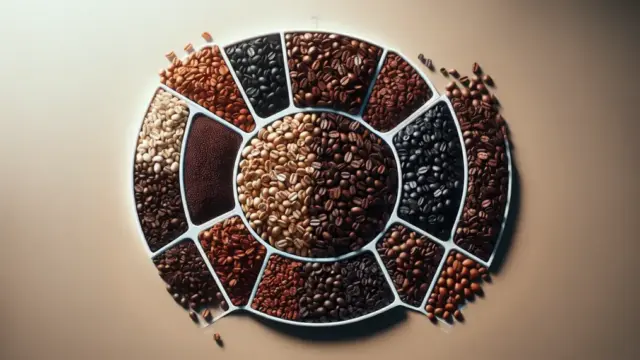












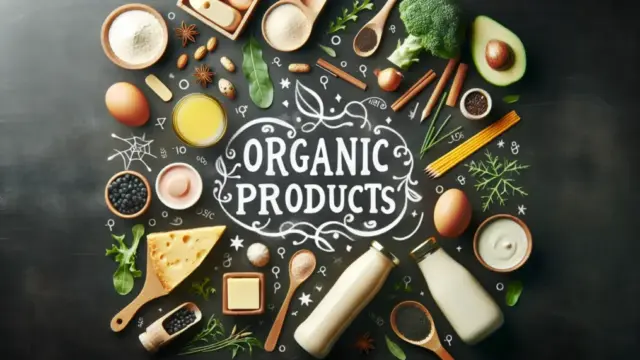
























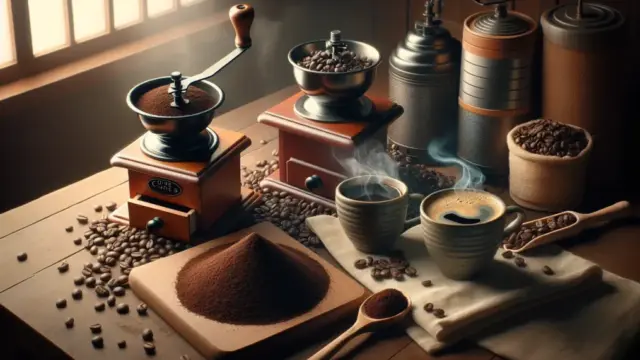

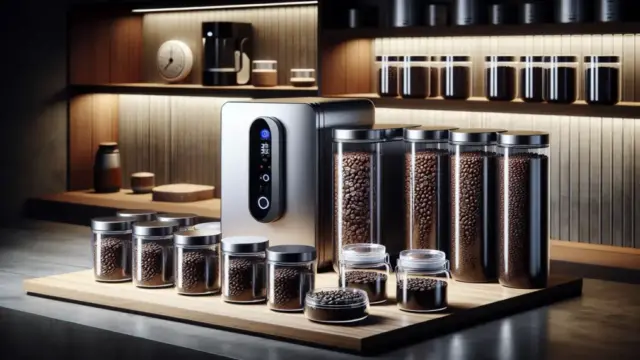






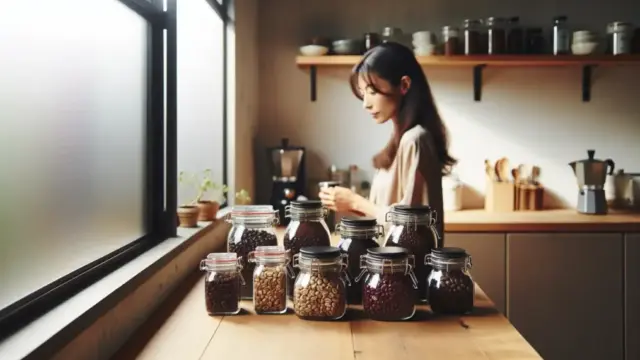



















Comment